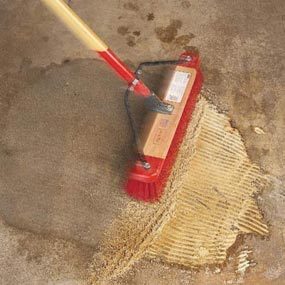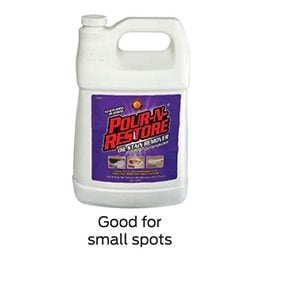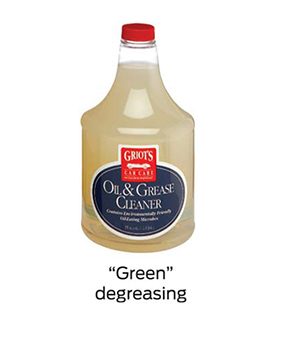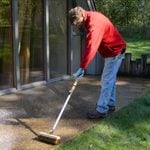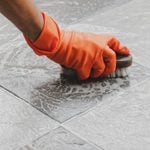Clean Garage Floors – Remove Oil Stains From Concrete
Updated: Mar. 05, 2019A clean garage floor is safer and looks better, too.
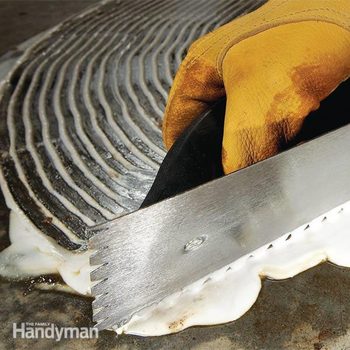
- Time
- Complexity
- Cost
- Multiple Days
- Beginner
- Less than $20
Overview: How to Get Oil Off Cement
Oil and grease stains don’t just make a garage floor look bad- they can also cause falls, ruin your shoes and get tracked into the house. And if you want to finish your floor with a coating, it’s essential to get rid of oil stains deposits for a good bond. Solvent-based remedies are harmful to the environment and can damage the concrete surface. Cat litter, sawdust and other absorbent materials remove standing oil but do nothing about the oily stain left behind. Commercial and household detergents require a lot of scrubbing and can leave behind residue or discolor the concrete. Here are two product that actually work.
Getting rid of small spots
Pour-N-Restore, which combines a citrus degreaser with a non-leaching absorbent, is one option. It’s easy to use and it works well for spot-cleaning smaller stains.
Scrape any standing oil, sand or grit off the spots using a stiff plastic scraper or putty knife and sweep the area clean. Provide good ventilation and wear eye protection, gloves and a dust mask. Spread Pour-N-Restore on the stain with a 1/4-in. notched trowel and let it dry (Photo 1). It can take eight hours or longer to dry depending on the temperature and humidity (for best results, use this product at temps above 60 degrees F). Once it dries to a powder, sweep it up (Photo 2) and throw it into the household trash. Let the moisture from the area evaporate completely, which can take a few days, and the stain should be gone. If the stain remains, reapply the product and scrub it with a push broom or nylon bristle brush. Let it dry, then sweep up the powder and throw it into the trash.
Pour-N-Restore is not recommended for use on asphalt.
Remove stains from larger areas
You can use Griot’s Oil & Grease Cleaner to clean and degrease small spots or your entire garage floor. It worked wonders on our oil stains. And the stuff is so mild that it won’t harm grass or plants and can be safely washed down the storm sewer, making it suitable for use with pressure-washing systems on larger areas. It’s also easy to use: You just spray the liquid on the spot, wait two to five minutes and then spray clean with a hard blast of water. Available at griotsgarage.com and auto parts stores.
Required Tools for this How to Get Oil Off Cement Project
Have the necessary tools for this DIY project lined up before you start—you’ll save time and frustration.
- Dustpan
- Notched trowel
- Putty knife
- Safety glasses

